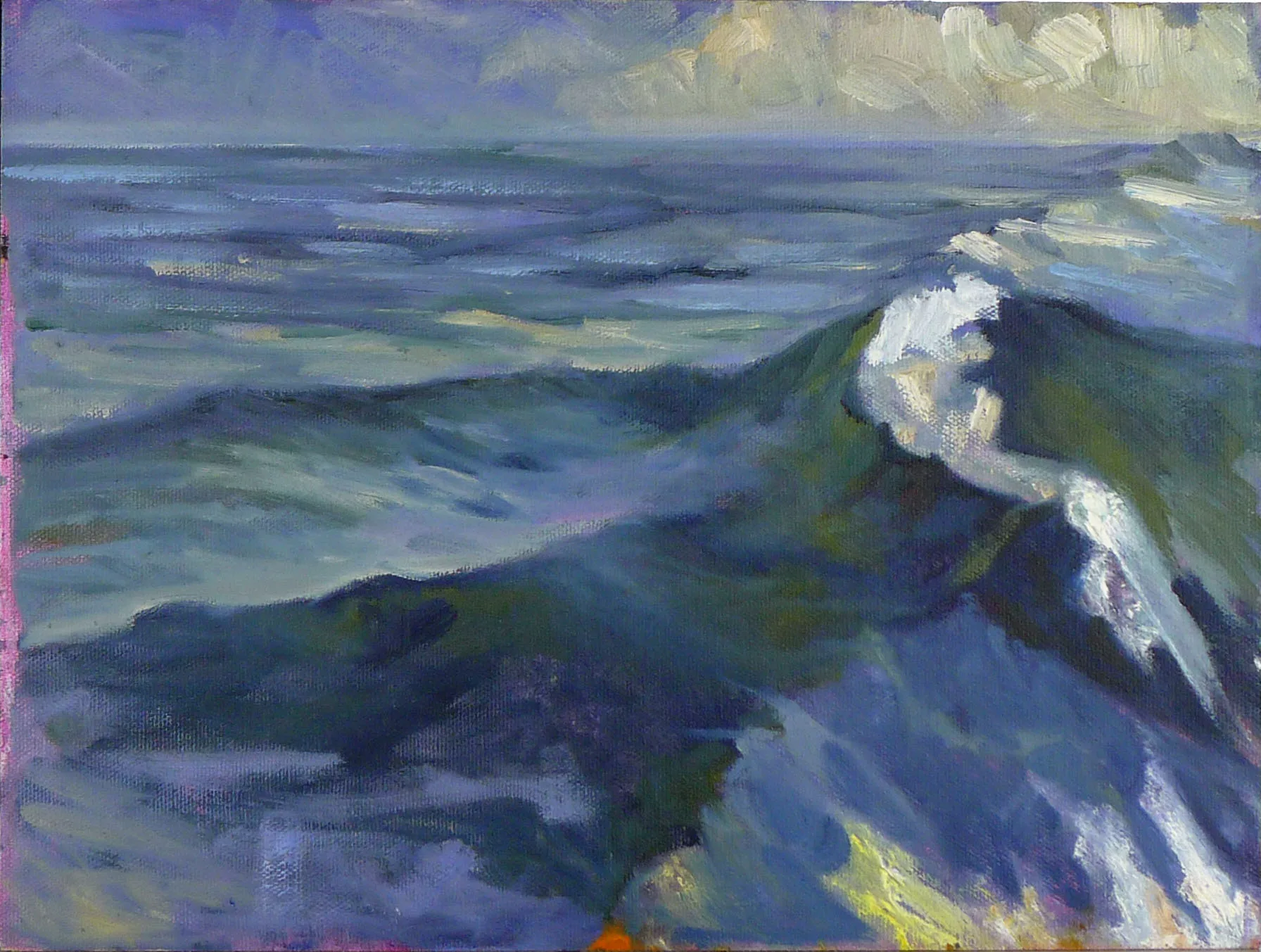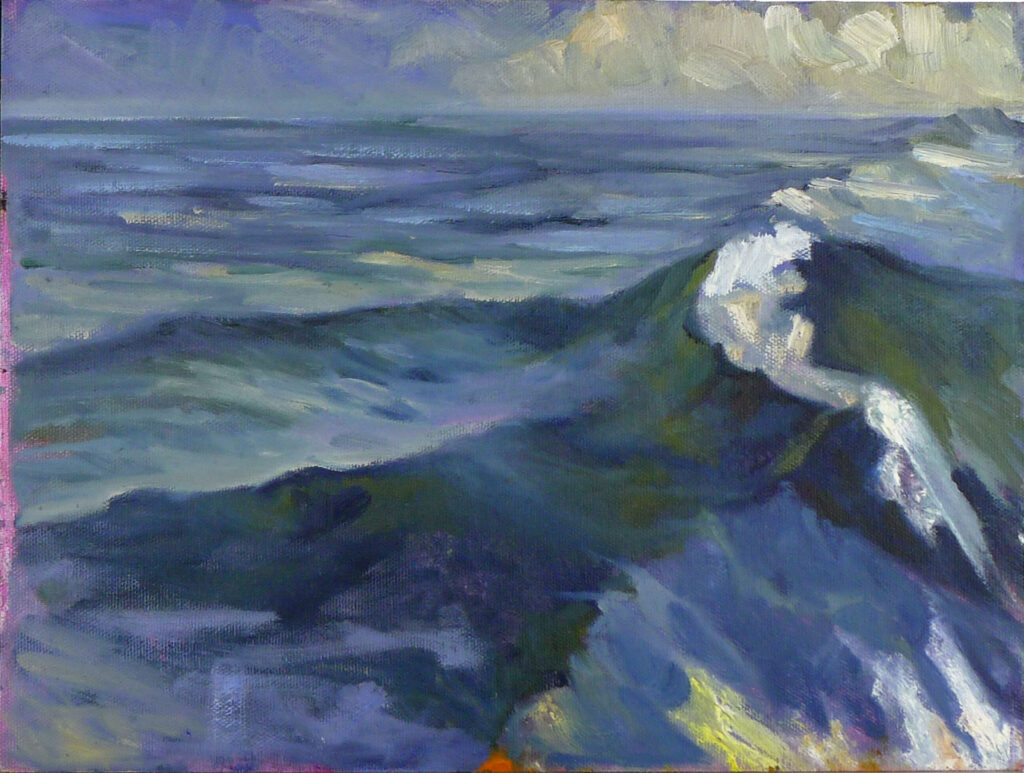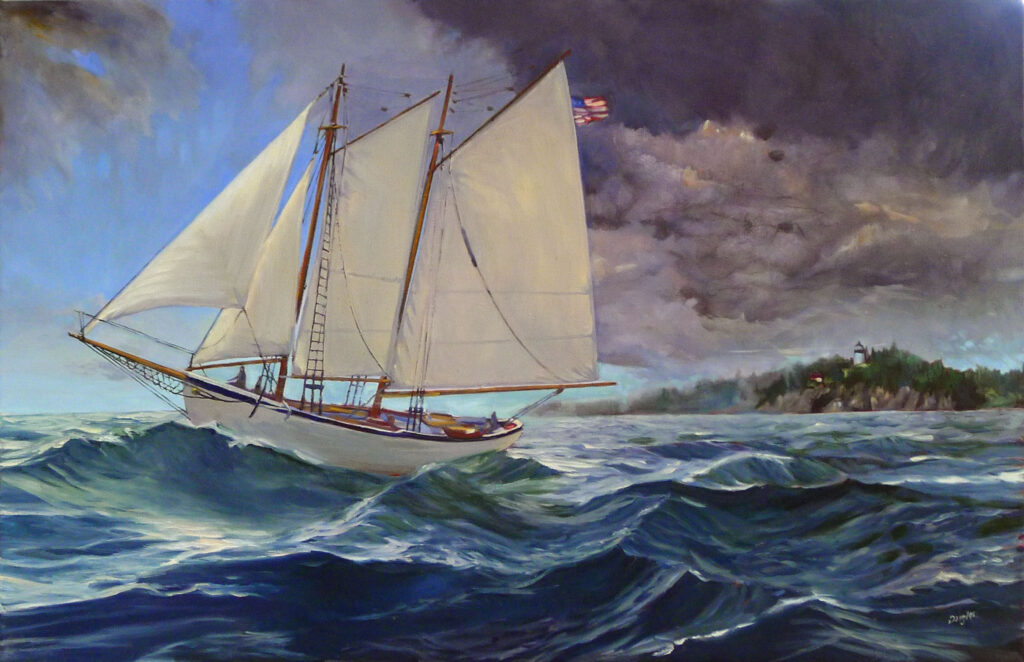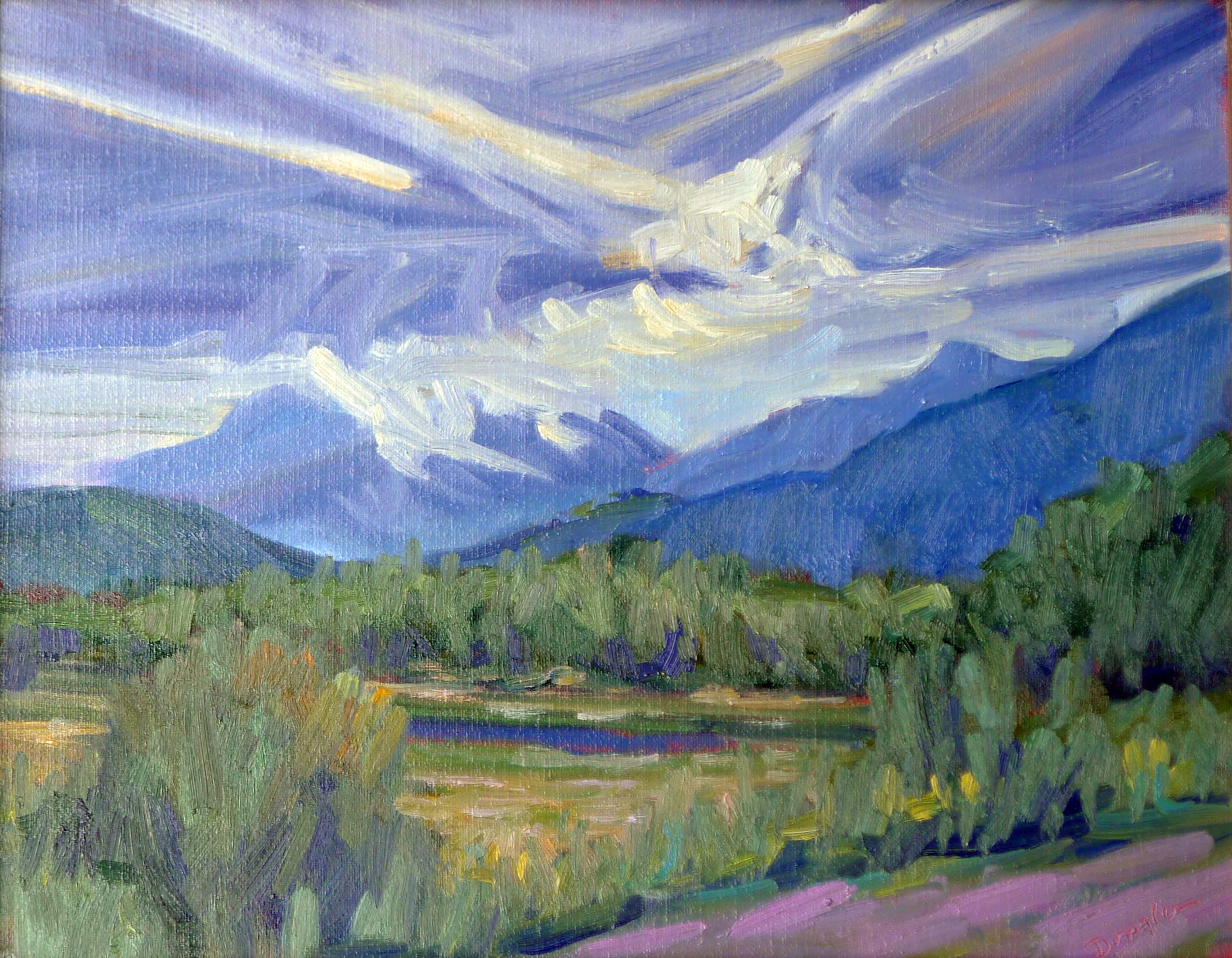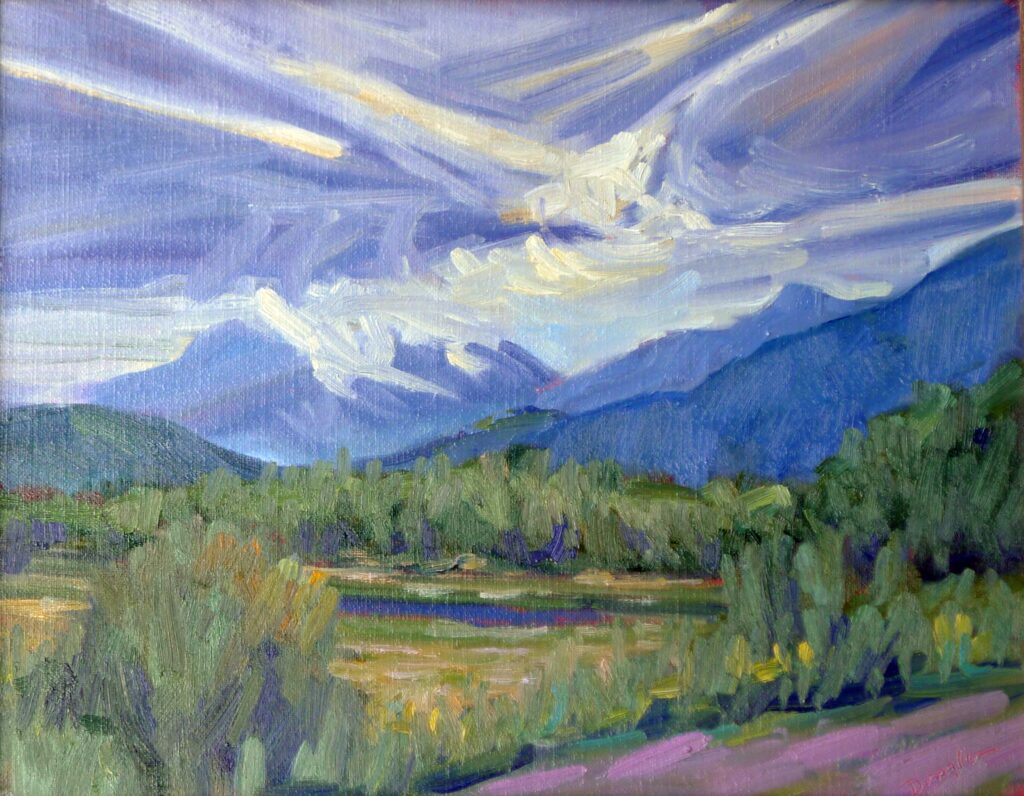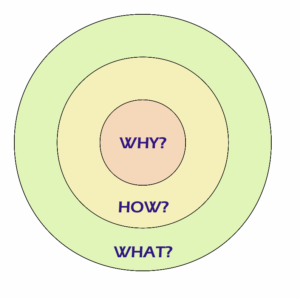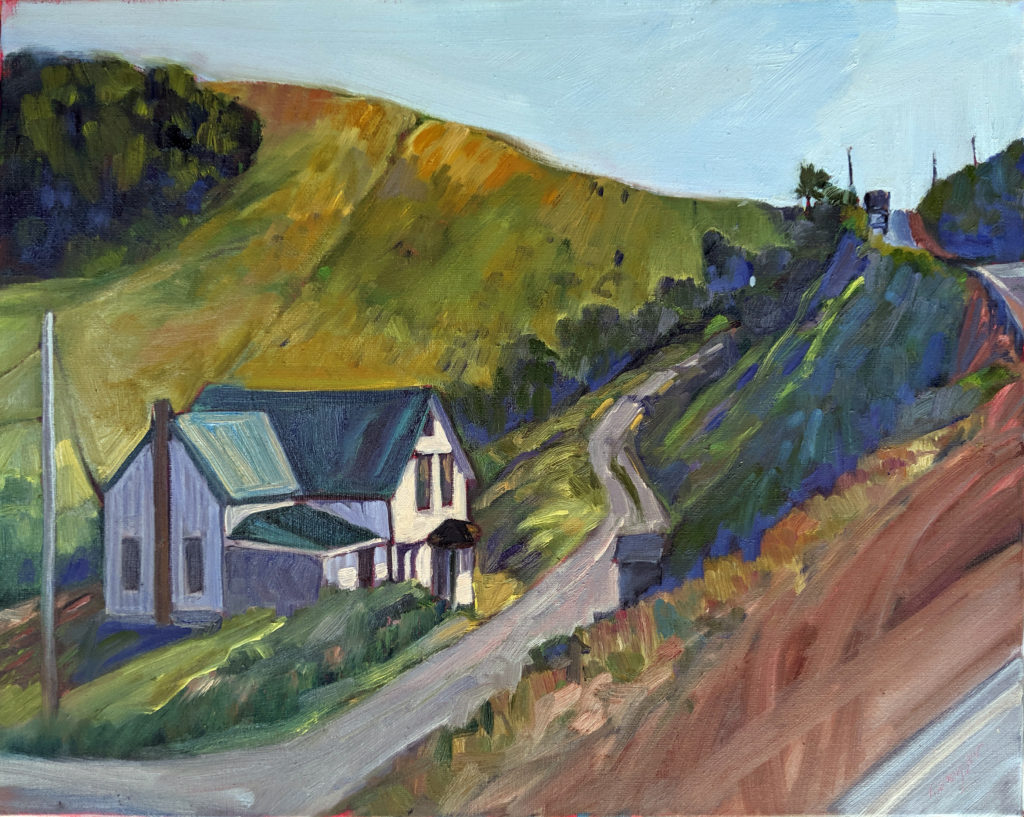A creative block is a mental roadblock. You feel stuck, uninspired, and have difficulty concentrating. Your creativity is halted or hindered, and nothing you create meets your standards. We all hit these roadblocks in the creative process.
What creative block do you struggle with?
For me, the worst causes of creative block are overwork, breaks in my routine, and pressing problems crowding out my painting time. But my worst obstacle is clutter. (My engineer husband says he isn’t bothered by it. Go figure.)
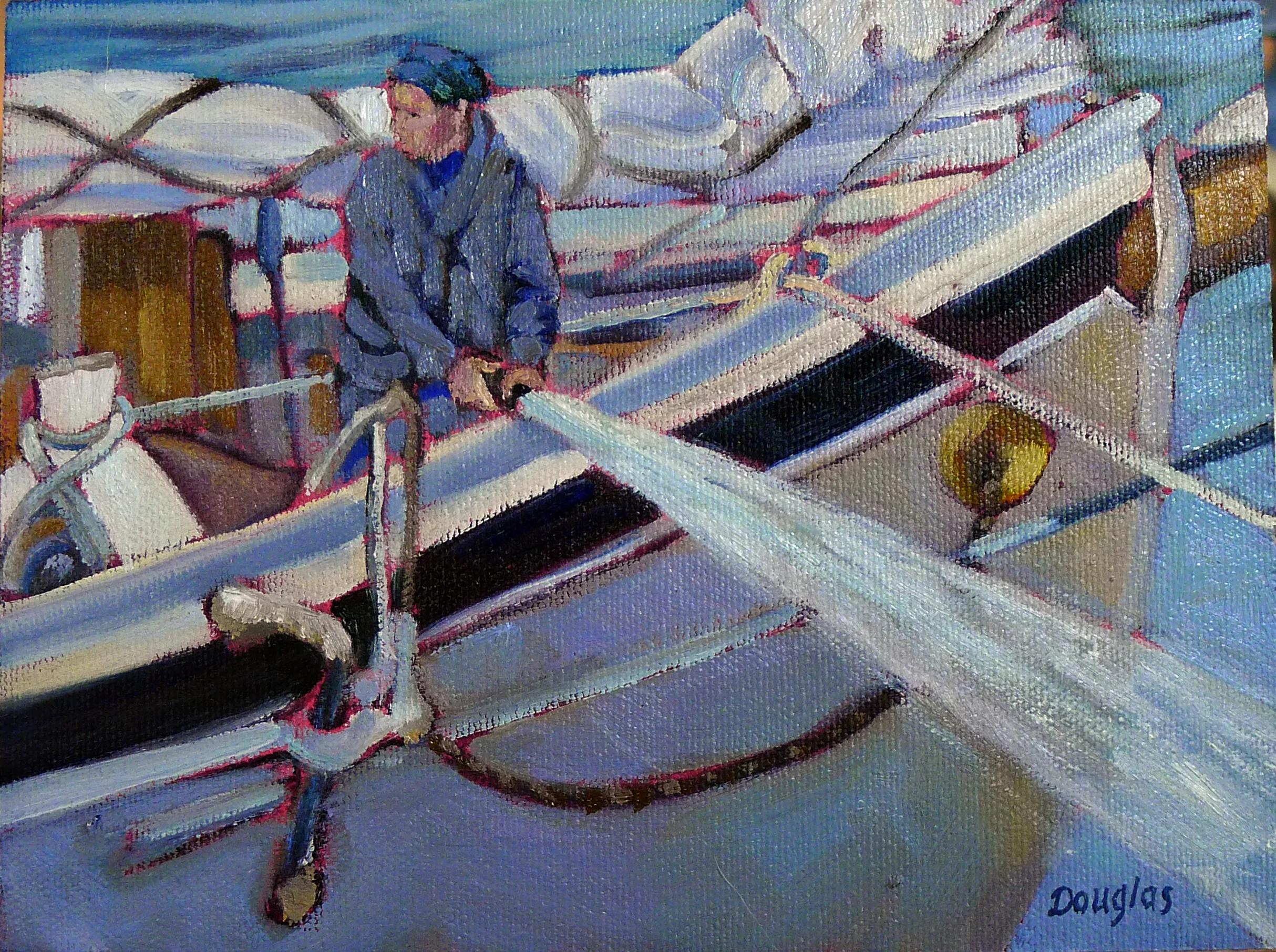
Here are some other common causes of creative block:
- Fear of failure, self-doubt and negative feedback (see Monday’s post for help);
- Perfectionism, which is the enemy of good;
- External stressors (including for some people, deadlines);
- Monotony;
- External distractions. From what many artists have told me, first among these are household chores.
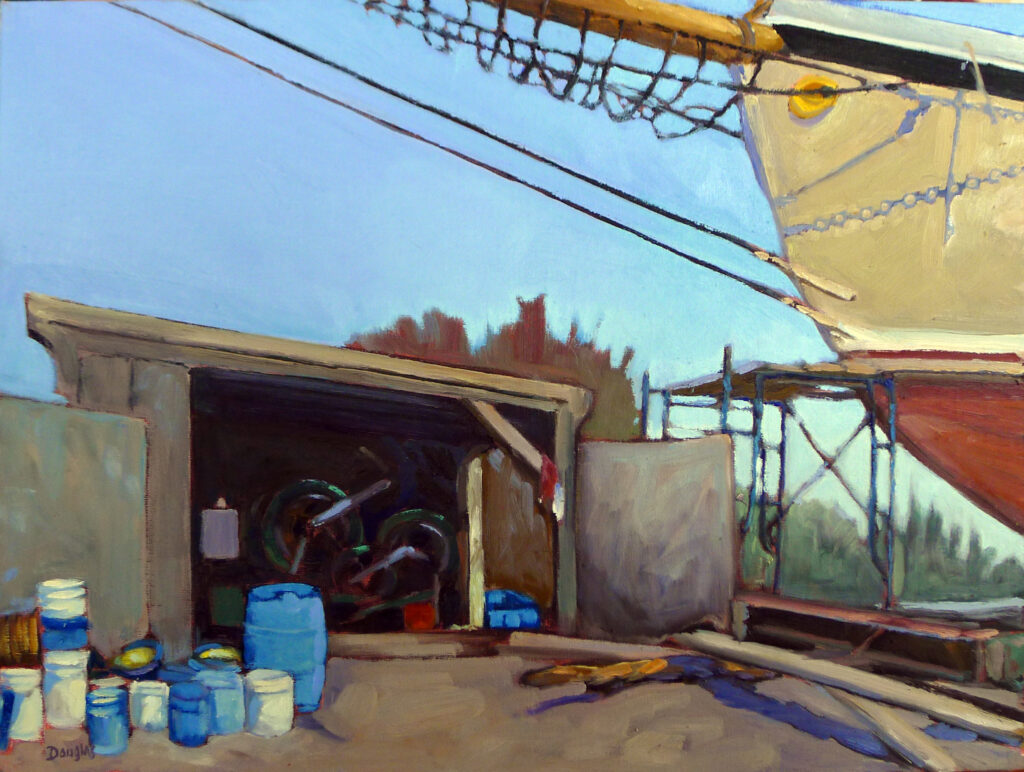
How do you overcome creative block?
I work at regularly-scheduled times (Monday-Friday). That quiets my squirrel brain, and helps me sink into the painting state more easily.
I also believe in rigorous daily exercise. It’s good for the psyche as well as the back. And for me, deadlines are energizing, at least until they’re too close. There’s a fine line between excitement and panic.
Others have found these ideas helpful:
- Change up your environment. That’s one of the beauties of plein air; it’s never the same from day to day.
- Take frequent breaks. Give your brain a chance to recharge. If nothing else, reading the news makes me eager to get back to my easel.
- Do some creative work that isn’t directly related to your main discipline. That’s why I’m teaching a session on words and art in June, but anything that you enjoy will help. That includes reading, which is a fantastic spur to the imagination.
- If deadlines panic you, set benchmarks. “Today I’m going to finish the grisaille and then I’ll reward myself with a cappuccino.” Recognizing your smaller accomplishments gives you a sense of momentum.
- Put ten, and only ten, things away every morning. Five minutes of putting things away every morning stops me from sliding into a big housekeeping binge when I should be painting.
- Peter Yesis and I both (coincidentally) spent a few years doing small warm-up exercises (fifteen or twenty minutes) before we painted. I no longer need them, but they helped me bridge the gap between real life and my studio during a long period in the creative desert.
Some distractions can’t be ignored
There have been phases in my life (parenting, illness, grief) when my work slowed or even stilled. Yes, I believed at those times that I could never regain my momentum. However, here I am, and if you’re in one of those phases, you will too. It’s helpful to remember that life comes first, no matter what your discipline.
Creative blocks and interruptions are a natural part of life. Be patient with yourself.
I’m in Britain on another lovely, long, blister-inducing hike. I’ve turned my phone off and while I’m gone, Laura will be running the office. Just email me as usual if you have questions or problems registering for a class or workshop. (Who am I kidding? She fixes all that stuff anyway.)
Reserve your spot now for a workshop in 2025:
- Advanced Plein Air Painting, Rockport, ME, July 7-11, 2025.
- Sea and Sky at Acadia National Park, August 3-8, 2025.
- Find Your Authentic Voice in Plein Air, Berkshires, MA, August 11-15, 2025.
- Immersive In-Person Fall Workshop, Rockport, ME, October 6-10, 2025.

